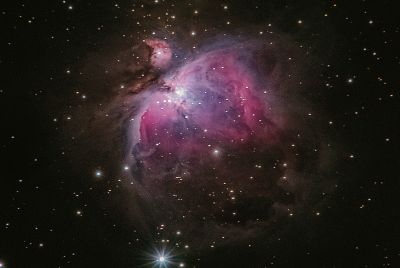Woolly Mammoth DNA Revives Powerful New Antibiotic to Fight Superbugs
Ancient Genes Offer Modern Hope in the Battle Against Drug Resistance

Beneath the Siberian permafrost, frozen for 4,000 years, lies something that could save millions of modern lives.
Scientists have discovered that woolly mammoths – those massive, hairy elephants that roamed Ice Age Earth – carry within their ancient DNA the blueprint for a revolutionary antibiotic that destroys today's most feared superbugs.
The breakthrough comes as hospitals worldwide face a terrifying reality: common infections that once killed our ancestors are returning with a vengeance, armed with resistance to every weapon in medicine's arsenal. What started as humanity's greatest medical triumph – antibiotics – has become a race against bacterial evolution that we're rapidly losing.
Ancient peptide named mammuthusin
Using artificial intelligence (AI), researchers identified an ancient peptide they named mammuthusin that effectively combats bacteria resistant to current treatments. This ancient protein acts like a molecular battering ram, punching holes in bacterial cell walls until they collapse and die.
In laboratory tests, mammuthusin proved as effective as polymyxin B – medicine's last-resort antibiotic, reserved for the most desperate cases. But unlike polymyxin B, which often damages patients' kidneys, mammuthusin showed minimal toxicity to human cells.
'We're essentially mining the past to save the future,' said Dr César de la Fuente of the University of Pennsylvania, who led the study. 'It's like finding a perfectly preserved medieval sword that cuts through modern armour,' de la Fuente marvels.
Dr César de la Fuente wasn't thinking about mammoths when he started his quest to defeat superbugs. The University of Pennsylvania researcher had spent years watching traditional antibiotic development fail – a process so slow and expensive that pharmaceutical companies were abandoning it entirely.
'Instead of creating new drugs from scratch, why not ask evolution what worked? Four billion years of natural selection must have produced some incredible antimicrobial weapons.'
His team fed massive computing systems the genetic blueprints of creatures that survived millions of years of bacterial warfare. Woolly mammoths, living through harsh Ice Age conditions, would have needed powerful defences against infection. Their DNA might hold secrets that modern medicine had never imagined.
According to the World Health Organisation, antibiotic resistance causes more than 5 million deaths globally each year. If no solutions are found, this number could rise to 39 million by 2050.
Britain's Silent Emergency
The timing couldn't be more critical. UK Health Security Agency data reveals antibiotic-resistant infections jumped 4.1% in 2023 alone, costing the NHS nearly £20 million annually. But money pales beside human cost.
Dr Amanda Foster, an infectious disease specialist at Manchester Royal Infirmary, sees the crisis daily. 'I'm treating patients with infections my grandmother could have cured with penicillin. We're going backwards to a pre-antibiotic era where people died from scratched knees and chest colds.'
The statistics paint a grim picture. Resistant bacteria already cause over 5 million deaths worldwide each year. Without breakthrough treatments, that figure could reach 39 million by 2050 – more than cancer and heart disease combined.
Racing Against Time
Clinical trials for mammuthusin could begin within two years – lightning speed for medical research. But bacteria won't wait. Every day brings new resistant strains, each deadlier than the last.
'We're in a genuine race between human ingenuity and bacterial evolution,' warns Dr Foster. 'These ancient peptides might buy us crucial time, but we need dozens of new antibiotics, not just one or two.'
Beyond Mammoths: The Treasure Hunt Expands
Success with mammuthusin has sparked a prehistoric gold rush. Research teams worldwide are mining DNA from extinct species, ancient human ancestors, and even insects preserved in amber.
Dr Chen Liu's laboratory in Edinburgh analyses Neanderthal genetics, seeking antimicrobial peptides that helped our cousins survive Ice Age infections. 'Neanderthals lived for 400,000 years in challenging environments. Their immune systems must have developed remarkable defences we've never seen.'
Other researchers examine snake and spider venoms, which evolved as chemical weapons against bacterial infection. Even human gut bacteria and microbes from Arctic permafrost offer potential antibiotic goldmines.
The mammoth discovery proves that solutions exist in unexpected places. Four thousand years ago, a woolly mammoth defending itself against bacterial infection created a molecular weapon that could save 21st-century lives.
As researchers expand their search through evolution's vast antimicrobial library, one thing becomes clear: sometimes the future's salvation lies buried in the distant past, waiting for modern science to uncover treasures hidden in ancient DNA.
The woolly mammoth's gift to humanity may be its greatest legacy – not ivory tusks or museum specimens, but microscopic weapons capable of defeating medicine's most feared enemies.
© Copyright IBTimes 2025. All rights reserved.





















